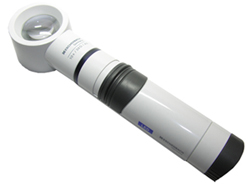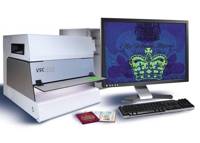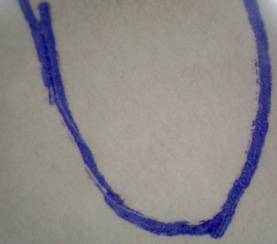Forgery
A document may be forged in part or in its entirety. The document examiner may need to consider investigating the type of printed material present, the paper, any mimicked security features, handwriting and signatures. Indented impression evidence may also link separate pages together.
 When examining any questioned document, it is always important for the examiner to check that the document itself is genuine. For instance, when examining a contested will, do all the pages and paragraphs belong to the same original document, or has something been added and the signatures are in fact from the original genuine document. Is a suspect cheque altered or completely counterfeit?
When examining any questioned document, it is always important for the examiner to check that the document itself is genuine. For instance, when examining a contested will, do all the pages and paragraphs belong to the same original document, or has something been added and the signatures are in fact from the original genuine document. Is a suspect cheque altered or completely counterfeit?
A document may bear forged handwritten entries, for example added entries to an invoice; or the whole document may be forged, such as an entirely fabricated invoice for an insurance claim, or a fake tenancy agreement which has been re-written. It may be the case that signatures have been forged on a new version of a will, so that in this instance the printed text itself will need to be examined along with the forged signatures and handwritten entries present.
 A forged immigration document will need to be examined to determine how it was printed, and if any printing defects can link it to other forged copies of the same form or a common source such as the art work or printing plates. It may also be possible to group the handwriting present to a common author, thereby linking the documents. If suspect are known, these can then be screened against to questioned handwriting to search for the author.
A forged immigration document will need to be examined to determine how it was printed, and if any printing defects can link it to other forged copies of the same form or a common source such as the art work or printing plates. It may also be possible to group the handwriting present to a common author, thereby linking the documents. If suspect are known, these can then be screened against to questioned handwriting to search for the author.
Signatures are commonly forged either by computer scanning or photocopying using a ‘cut and paste’ method, whereby the forged signature does not exist in an original form. If the genuine signature form which it was scanned can be located (think what documents the forger may have had access to) they can be matched up, providing conclusive evidence of forgery.

Another common process to copy signatures is through practice and memory, useful for when a signature needs to be written out in front of an individual (cashier or bank teller). Here mistakes are made in reproducing an accurate version of the genuine signature, particularly those with illegible or usual letter designs.
Tracing methods can also assist in the production of an accurate signature copy; however, the pen lines usually show evidence of tremors, pauses or retouching pen strokes where amendments are made or the pen is lifted.
![]()
The business is temporarily closed,
we apologise for any inconvenience.
